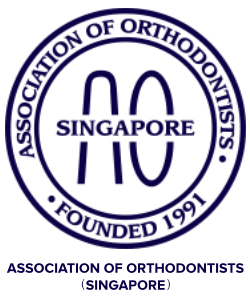Do I have to wait for all baby teeth to drop before starting braces?
The recommended timing for a first orthodontic check is age 7. There is no need to wait for all adult teeth to be present before visiting the orthodontist, as some situations may benefit from early treatment to prevent development of future problems.
Will orthodontic treatment be painful?
Just like wearing a new pair of shoes, you may experience some mild discomfort after placement of braces. Some tissue irritation may occur, and patients commonly report development of small ulcers. However, your lips, cheeks and tongue will soon get used to them and you might even miss them when they are finally removed! Minor discomfort may also be experienced after each adjustment, although patients have reported a reduction in pain as the treatment progresses.
Will orthodontic treatment change my lifestyle?
Patients have differing perceptions of how orthodontic treatment affects their lifestyle. Some patients report a slowing down of eating and that they have to avoid hard/chewy foods; to others, there is minimal change of their eating habits.
With the exception of patients who have orthodontic extractions, there is otherwise zero physical downtime during orthodontic treatment. You can resume your daily activities/work straight after placement and activation of braces.
What is the difference between orthodontic treatment in adults and children?
While our teeth move in the same way regardless of age, tooth movement may be slower in adults due to less cellular activity and density of bone. Therefore, adult treatment may take longer than that in children.
What if I am missing some teeth?
The space of the lost tooth may be closed with braces or maintained (also with braces) to be replaced with a prosthesis. This decision should be made together in consultation with the attending prosthodontist or family dentist.
Depending on the location and the number of missing teeth, certain tooth movements may be more challenging. In complex cases, auxiliary implements, such as miniscrews (tempo-rary anchorage devices) or headgear, may sometimes be necessary to expand the range of tooth movements that can be achieved.
Will braces fix my crooked teeth once and for all?
To ensure that your new smile is maintained for the years to come, regular wear of your retainer is recommended to reduce the risk of your teeth moving out of place after your braces have been removed.
Is ‘instant orthodontics’ a type of braces?
Some advertisements that claim ‘instant’ straight teeth may actually use veneers/dental crowns to cover crooked teeth and mask the underlying problem. This procedure usually requires removal of a significant amount of good tooth structure.
Orthodontic treatment corrects irregularities in the arrangement of your teeth by moving the teeth using fixed or removable appliances. This may improve appearance and function of your teeth. It does not usually require the removal of good tooth structure.
I have been told that my teeth can move ‘faster’ during braces, is that possible?
Teeth cannot be moved faster than what nature allows. Various oral devices and fixed braces to speed up treatment have been developed by various manufacturers, but current scientific evidence shows no difference in speed of movement and treatment time with use of these methods/appliances.
Are DIY braces/aligners any good?
You might have seen on social media a handful of posts regarding Do-It-Yourself braces and aligners, advertised by direct-to-consumer companies or individuals. All dental treatment MUST be carried out by trained dental professionals as there is always the possibility of irreparable teeth or gum damage if done improperly. DIY orthodontics carries a high level of risk and should be avoided. When in doubt, refer to the Singapore Dental Council directory or the AOS member directory to verify that your dental professional has the necessary skills to treat you.
